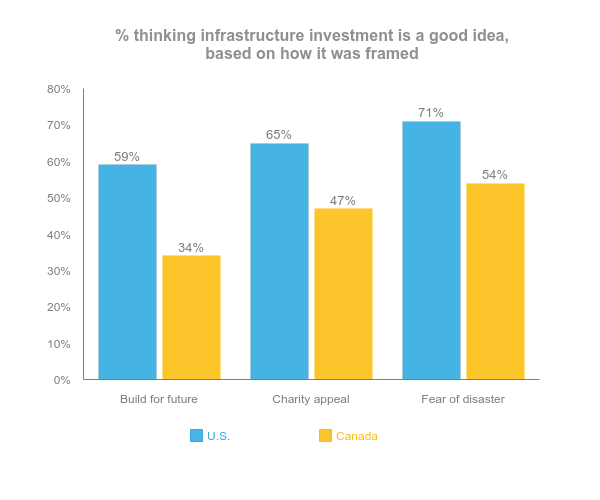“When You Put It That Way…”: How Message Framing Impacts Acceptance of a Difficult Message
By Sara Cappe, Managing Director, Public Services | March 9, 2018
A price increase is bad news. No one wants to be told their costs are going up—especially for an essential commodity. But how you deliver that news can make all the difference.
To demonstrate how message framing impacts acceptance, we investigated alternative ways of delivering news that a utility was adding a 3% surcharge to people’s bills.
Shortly after Puerto Rico was flattened by Hurricane Maria in September 2017, we tested three ways of introducing a new infrastructure fee:
The first was an appeal to building for the future.
The second included an appeal to support a charity that would benefit the people of Puerto Rico.
The third pointed out how disastrous it would be without a robust electrical infrastructure, pointing to Puerto Rico as an example.
Each person answering the survey was exposed to just one of these messages. They were told, “Imagine this message was included in your next electrical bill” and asked if they thought this was a good or bad idea.
The appeal to building for future generations is a classic rational argument. The charity approach is an example of positive framing that involves both misdirection and an appeal to the heart. The potential disaster scenario plays the emotional card of fear. Not surprisingly, both the emotional appeals test better than the purely rational one, but the potential for disaster tests the best of all. Why?
“Bad news sells because the amygdala is always looking for something to fear,” writes Steven Kotler. The amygdala is the part of our brain that is responsible for primal emotions like rage, hate, and fear. It’s our danger radar. Its job is to identify anything that could threaten our survival. When we appeal to fear and possible negative consequences, even a 3% price hike on your electrical bill can seem like a good idea.
How utilities frame messages to their customers about price increases, outages, investments and conservation initiatives (to name a few topics) is one thing we are exploring in our Utility Guidebook—a subscription-only quarterly deep dive into issues facing the Utility industry. We are interviewing more than 8,000 North Americans over the course of 2018, delving into topics like: improving the customer experience; testing new initiatives and programs; the value of community engagement; and market trends. To learn more about how the Utility Guidebook can help you develop a better relationship with your customers, contact us.


